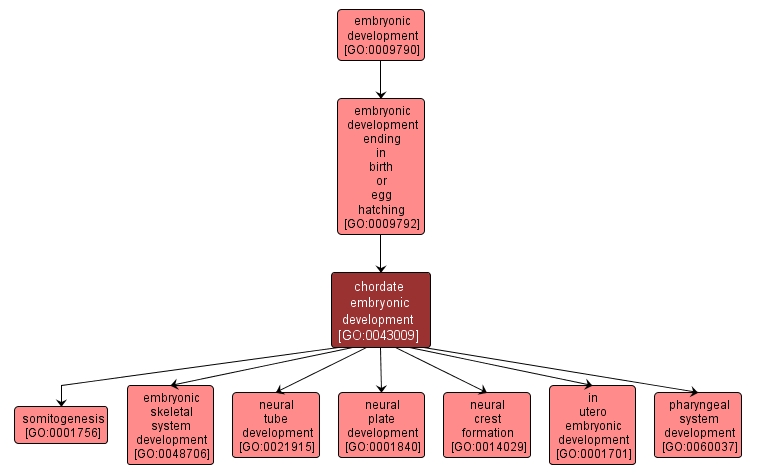GO TERM SUMMARY
|
| Name: |
chordate embryonic development |
| Acc: |
GO:0043009 |
| Aspect: |
Biological Process |
| Desc: |
The process whose specific outcome is the progression of the embryo over time, from zygote formation through a stage including a notochord and neural tube until birth or egg hatching. |
|

|
INTERACTIVE GO GRAPH
|














